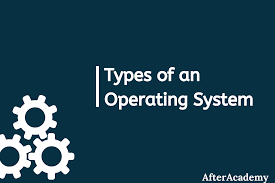Introduction
An operating system (OS) is a system software which manages, operates and communicates with the computer hardware and software. The main job of OS is to provide resources and services to the user. Without OS, computer would be useless.

An OS acts as an interface between the user and hardware of the computer. It also controls the execution of application programs. Operating system is also called as resource manager.
Operating System Objectives
(1) Convenience : Computer system can be conveniently used due to operating system.
(2) Efficiency : Computer system comprises of many resources. User’s application utilize all these resources in efficient manner due to OS.
(3) Ability to evolve : The design of the OS permits the efficient development. It is also supports for flexibility by allowing for addition of new system functions without interfering with service.
Functions of Operating System
The important functions of OS are as given below:
(1) Process Management : It provides control access to shared resources like file, memory, input and output. It control the execution of user application. It involves creation, execution and deletion of user and system processes.
(2) Memory Management : It allocates the primary memory as well as secondary memory to the user and system processes. Memory management monitors and keep track of how much memory used by the process.
(3) File Management : It keeps backup of files and offers the security of files. Files and directories can be create and delete by operating system.
(4) Device Management : Device Management keeps an eye on device driver. It communicate, control and monitor the device driver.
(5) Booting the Computer : The process of starting or restarting the computer is known as booting. If computer is switch off completely and if turn on then it is called cold booting. A warm booting is the process of using the operating system to restart the computer.
Types of Operating System

(1) Multi user : OS is multi user means it supports for many number of users to work on same computer at the same time. Some of the operating systems permit hundreds or even thousands of users working on the system currently.
(2) Multiprocessing : Multiprocessing OS supports for multiple CPU in a system. It supports for allocation of different CPU to multiple threads of the program. Linux and UNIX are the examples of it.
(3) Multitasking : OS which supports for multitasking, permits for execution of many software processes at the same time. In Multitasking OS, Multiple tasks can be handle Concurrently.
(4) Multithreading : A single program can have multiple threads that can run in parallel. The operating system supporting for multithreading can divide the program in multiple threads that can run in parallel.
(5) Real Time : For real time OS time constrains are a key parameter. Real time OS must respond quickly. All above OS like UNIX, Windows are not real time OS.




